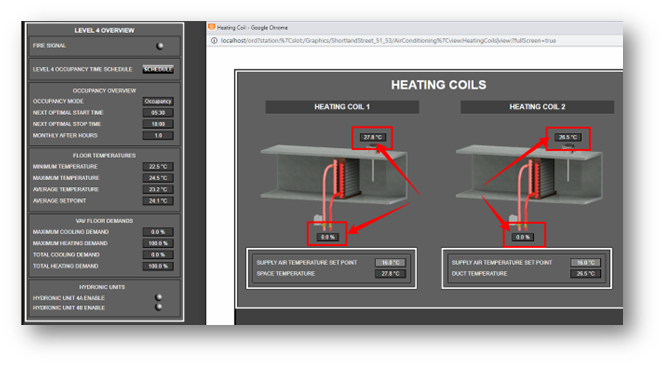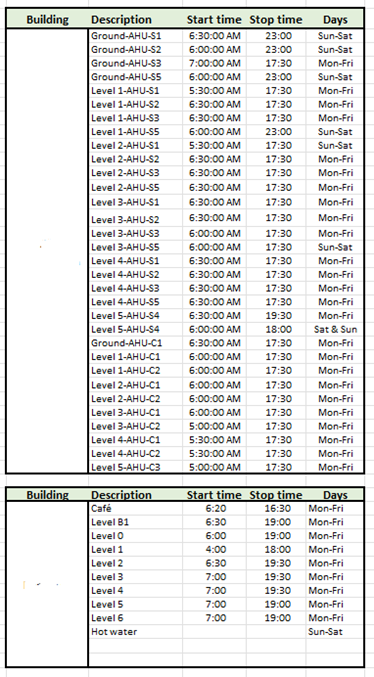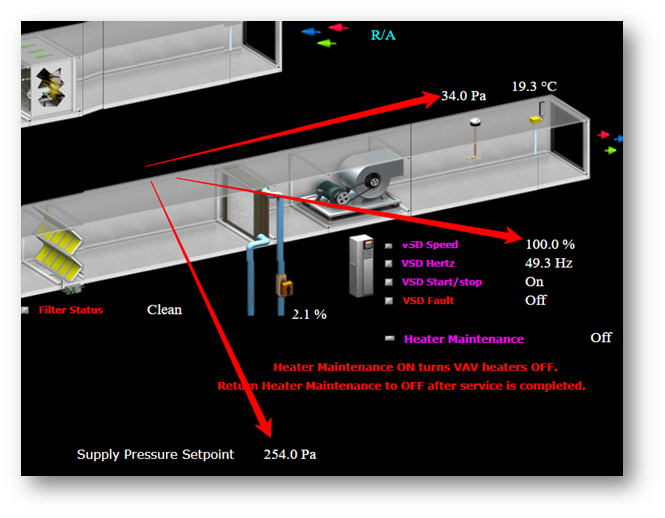
News, Decarbonisation, Energy Efficiency
What is continuous commissioning?
Continuous commissioning is becoming a vital part of any building maintenance project, offering both decarbonisation opportunities in the form of increased energy efficiency, as well as reduced operational expenses and downtime due to improved equipment performance. However, while continuous commissioning is becoming more popular, it can also be a misunderstood term, particularly when compared to traditional, established commissioning methods.
At the CEP Conference 2023, our CCX expert Hong Lee had the opportunity to explain how continuous commissioning works, its benefits, what to expect from the process, and describe how it can become a cornerstone of progress from the quick wins right through to long term successes.
Watch his expert talk below or read on for a written summary.
What is continuous commissioning?
As part of an energy and carbon management programme, a business may invest in commissioning – a systematic process of ensuring that a building performs according to the design, contract and operational needs of the owner and any tenants. However, there are multiple forms of commissioning, and not all are created equal.
- Commissioning is the initial setup and tuning of a building’s systems to meet the needs of the owner(s) and their tenants after the building is first built.
- Recommissioning is like commissioning, but is done when structures have already been built, usually when there is a change in ownership, use, or the building experiences a significant drop in performance.
- Retrocommissioning is the application of the commissioning process to existing buildings, with a focus on improving how building systems and equipment function in connection with one another.
Commissioning, recommissioning and retrocommissioning all broadly have the same goal: to create or improve energy efficiency. They are also similar in one other important aspect: they are one-off projects with a set start and end date.
This is the main difference between regular commissioning models and continuous commissioning (CCX). Continuous commissioning is the “ongoing review and tuning of a building’s assets to optimise comfort and energy use over the long term”. It is, in essence, the regular and consistent checking of what a building is doing to ensure that there are no unnecessary energy inefficiencies that could present unnecessary risks, costs, and emissions.
What are the benefits of continuous commissioning?
The core challenge faced by building owners and managers that rely on standard commissioning processes is centred on the dynamic nature of modern commercial buildings. Even after equipment is rightsized, systems are tuned, and BMS’s are configured or reconfigured, they quickly fall out of alignment again. Both familiar and new inefficiencies inevitably appear and the building descends back to its previous baseline without the opportunity to discover and fix these problems (until the next one-off commissioning project, at least).
Continuous commissioning is the answer to that challenge. Rather than relying on a single start and end date for fixes and adjustments, continuous commissioning provides ongoing, regular checks that can a) uncover problems before they become serious issues and b) dive deep into the data to surface inefficiencies that even the most rigorous regular commissioning process may have missed.
In short? Continuous commissioning is the next step up from regular commissioning, offering an ongoing, expert eye on building performance and nipping issues in the bud before they bloom.
The “quick wins”: some practical examples
Typical commissioning schedules are perfectly capable of identifying the ‘quick wins’ – those projects that have low investment requirements and an acceptable energy efficiency gain. These are usually fairly obvious, such as the swapping of lighting to more energy efficient options.
Continuous commissioning can also uncover these quick wins, but they are also able to surface problems that regular commissioning simply can’t, due to CCX’s more long-term perspective and the improved opportunities that stem from that view.
Here are some examples:
The faulty sensor
Faulty sensors are hard to spot despite their significant impact on long-term efficiency. One common example is within HVAC systems; in the example above, the faulty sensor is sending back an incorrect readout to the building management system, resulting in the AHU running at a constant 100%, trying to reach a pressure that it never will, due to the faulty sensor. This resulted in an environment where there was not just unnecessary energy use, but also potential damage to the HVAC system due to constant, high-powered operation.
Finding this sensor would be like trying to uncover a needle in a haystack for a typical, one-off commissioning review. However, due to this building using CCX, our team was able to identify and rectify the problem as part of a regular check-up. Without that in-depth, long-term view, the issue would likely never have been found.
Multiply this error out to the many other similar systems and buildings across a portfolio, and you quickly get an idea of how these unseen issues can add up.
The faulty valve
Similar to the faulty sensor situation, a faulty valve in a hot water system is a) hard to spot while also b) having significant impacts on energy efficiency. In this example, the space was attempting to hit 16 degrees Celsius, but the water valve was continuing to provide hot water – despite being commanded to stop operating entirely.

As a result, heating was supplied when it wasn’t necessary. The heat controller was not at fault, it was in fact the valve – another issue that could easily be passed over during time-limited commissioning reviews. CCX picked up this issue, drilled into the source of the problem, and worked with contractors to resolve it. Not only that, but a faulty valve like this (or a sensor in the previous example) would have had flow on effects to the rest of the system. By fixing this valve, the CCX team were able to confront the source of the energy efficiency problem rather than reacting to the symptoms elsewhere.
The faulty schedule
CCX isn’t just about finding mechanical issues. When a building or section of a building brings in new tenants or changes use, it’s easy for the BMS scheduling to get overlooked. This results in utilities being switched on at the wrong times when neither staff nor customers/clients need to have access to them. Temperature control, lights, computer equipment, machinery and so on all are set, ready to go, consuming building resources without need.

This is also true even without a use change or tenant switchover. The reality is that most one-off commissioning projects work from either a) best estimates on what actual utility use will be and/or b) historical utility use. Modern environments are dynamic, ever more so in the days of remote working, so these estimates can become inaccurate – and the schedules are never adjusted to match the realities.
CCX, being continuously adjusted, doesn’t have this issue. Inappropriate scheduling is picked up quickly, and the BMS settings are tweaked to fit. No waiting 6 months, a year, or even longer, before the next scheduling overview, over which time the building will have experienced enormous amounts of wasted utilities and energy. The issue is nipped in the bud.
CCX and NABERSNZ
NABERSNZ is built for CCX and CCX is built for NABERSNZ.
First, NABERSNZ provides a quantifiable statement of performance that provides a quick insight into the most significant opportunities for CCX to shine. CCX identifies problems, but a NABERSNZ rating offers an independent overview that provides guidance towards the quick wins.
Second, NABERSNZ ratings must be re-evaluated every 12 months, ideally with the building seeing an improvement over that period of time – or at least not backsliding. A CCX programme can deliver those gains in a short period of time. Many ESP CCX clients that also get NABERSNZ ratings see a 0.5 to 1.0 star increase in 12 to 18 months.
With green building ratings becoming more important to all stakeholders, NABERSNZ users can greatly benefit from a CCX programme.
The big wins: the real opportunity with CCX
These are the quick wins but the real opportunities with CCX lie in the long-term gains offered by an equally long-term view. Here are a couple of examples where CCX made a significant impact.
Temperature control systems fighting one another
A key differentiator of CCX is that it inherently gathers precise, granular data over the course of its operations. Monitoring is baked into CCX in ways that it isn’t for one-off commissioning projects. Due to this, it’s more able to spot issues that are out of line with expectations.
In this example, the ESP team uncovered two separate temperature systems in one building were ‘fighting’ one another. The AHUs on the roof were using maximum demand for cooling calculations, even during winter, resulting in the chillers trying to reduce the temperature to 12 degrees. Meanwhile, the boilers that provided heating to the building were trying to raise the temperature to a more liveable standard, massively increasing gas usage and cost, contributing significantly to the building’s 2-star NABERSNZ rating.
The CCX monitoring spotted this aggressive cooling behaviour over the course of a few weeks, alerting our consultants. After investigating, the team was able to work with the contractors to use average demand for cooling calculations instead. This massively reduced energy and gas use, and the tenant that was affected commented on a significant reduction in utility costs, with use cut practically in half almost overnight.
Upon NABERSNZ re-assessment, the building received a 4-star rating, with this fix enabled by CCX contributing to this huge improvement.
Constant air purging spiking AHU consumption hours
Tenant complaints are often the first signal that something isn’t working correctly with a building climate control; comments around areas being too hot or too cold can lead to uncovering issues around inappropriate cooling or heating settings.
However, this isn’t always the case. Some energy efficiency issues don’t affect tenants, and so they go undetected. This was the case with this particular building, where faulty CO2 sensors were triggering the AHUs to constantly operate on purge mode, resulting in the equipment operating continually and unnecessarily for at least a week, likely longer.
As part of the CCX checks, the ESP team were able to identify this problem and work with maintenance teams to increase the CO2 sensor cleaning regime and add a simple values filter to the CO2 sensor single. This reduced the AHU usage from a constant 24/7 operation down to a more typical 50/60 hours per week, massively cutting energy consumption and extending machinery lifetime.
Looking to the future: what CCX enables
Continuous commissioning provides 3 long-term impacts:
- Consistent high baseline performance.
- Higher client confidence and trust.
- The ability to explore more aggressive reductions.
A CCX program, once invested in, continuously demonstrates its value, and empower all stakeholders to think bigger, staying confident that their investments will be kept in the best shape possible.
Looking to explore your options in continuous commissioning? Book a meeting with the ESP sales team to discover how we can help you keep your property operating at the best possible level.


